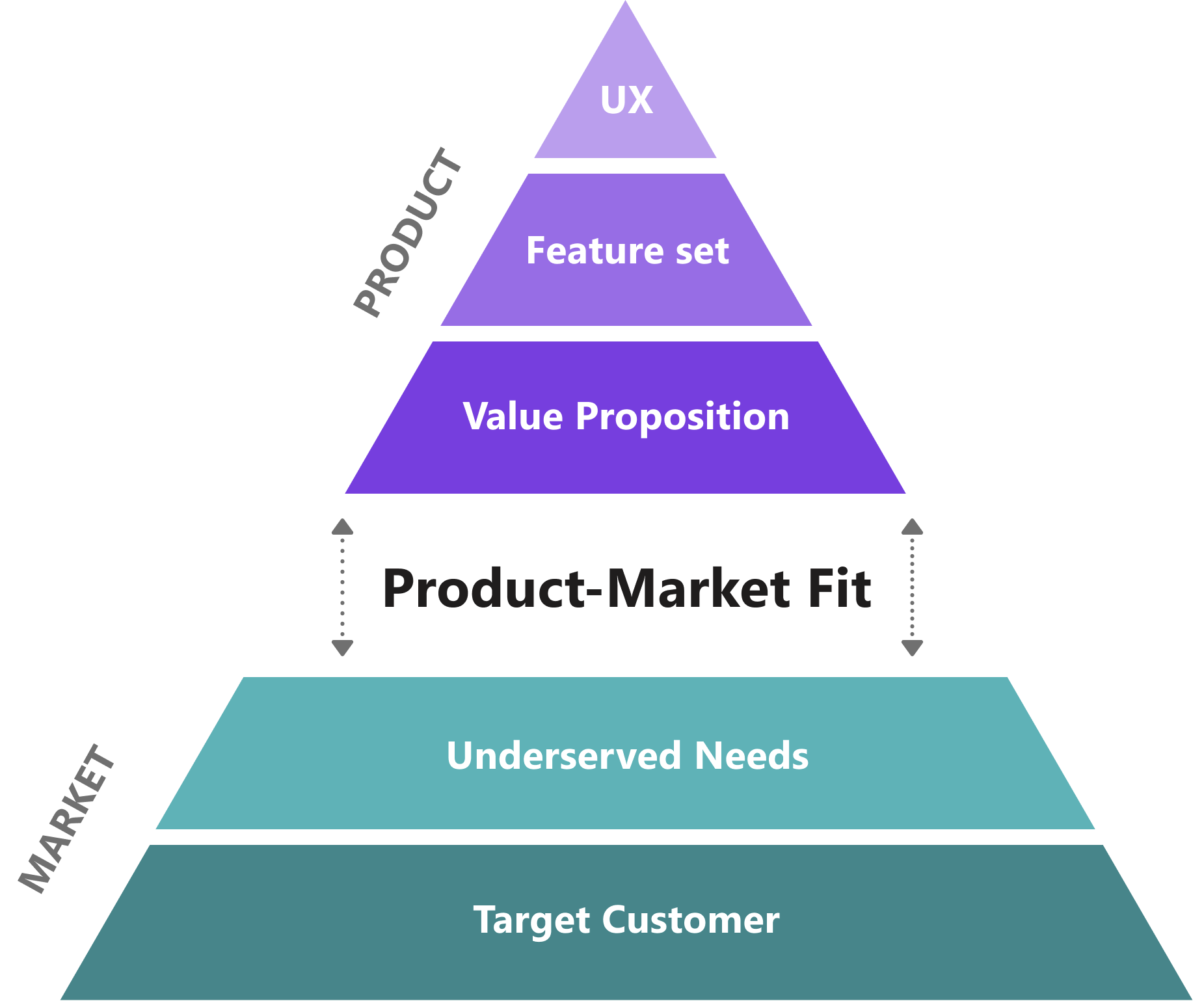¶ Product Market Fit
¶ What it is
Product-market fit is the degree to which a product satisfies a strong market demand. Product-market fit has been identified as a first step to building a successful product in which the company meets early adopters, gathers feedback, and gauges interest in its product(s). Once we know that our product meets a strong demand and that there is a fit, we can invest in scaling up.
¶ Why it is useful
Many companies need evidence of product-market fit as they predict or assume something will work without the data to back it up. With the correct view, decision-makers can decide what to do, including what to invest, what to create, how to adjust, etc.
¶ When to use it & Who is involved
Before you decide to make the product and after your product goes to the market, you will need to define and validate the product-market fit. The former strengthens investors’ confidence and is typically included in the Value Proposition Canvas, while the latter is to validate if it fits or needs adjustments.
Sales, finance, business, and support teams are involved.

¶ How is it done
- After the product goes to market, there are questions and data to synthesise:
- Do the potential users show interest in your product? Are any signs indicating they are going to switch to your product?
- Does your product show a unique value proposition that the users could perceive?
- Are the users who have rejected competitors’ products willing to try yours?
- How do you measure up your metrics against the key ones of your competitors?
- Both quantitative and qualitative research is needed to get all the questions answered and have a better understanding of the actual status of product-market fit.
- The research methods have been introduced in the Research sections of this playbook. Please refer back to those which can help you gather the correct data at scale and make relevant inferences.
¶ Do's & Don't
Do's
- Reflect on how you would expect users to behave if this product solved the problem you had scoped perfectly well. How often would they use it? How would they use it? What is success for them?
Don't
- Don’t assume that usage means product-market fit. Usage can be motivated by different factors (including promotions). Define what a fit looks like.
¶ Useful Tips
¶ How to achieve it
The review of performance data and product-market fit aims to improve the product before we invest in scaling it in the market. We should only make accurate scale investments once the product-market fit is proven, so we turn every marketing and infrastructure dollar into multiple revenue dollars.
With the review conclusions, there will be a list of improvements and ideas for prioritisation and value proposition mapping. This is the typical process of validation and results in iteration.
Compared with the MVP scope, the review could help the product team understand the way forward and scope adjustment.
Achieving product-market fit is, therefore, a process of deploying, measuring, learning, and iterating (similar to the Lean Startup methods and tools from the Validation chapter) until we have solid indications that our product flywheel is taking off and we have found the magic formula for sustained product success, retention, and growth.
